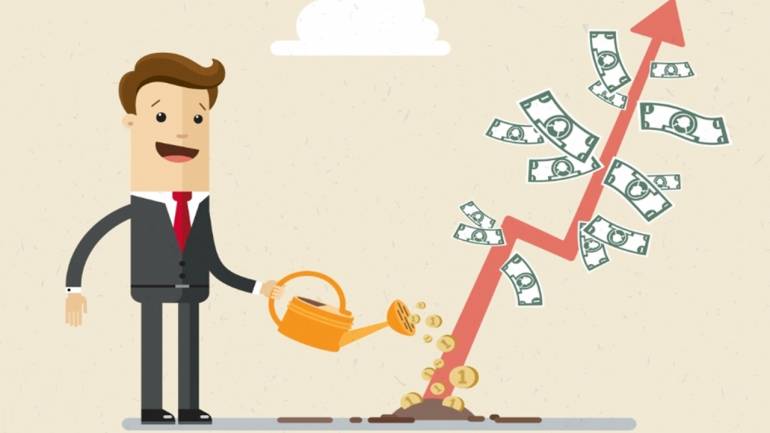
Our lifestyle is constantly changing and with every stage of life our expectations and standard of living change as well. This means that our income levels should change as well to match the same along with our savings and investments. This will help in meeting the various financial goals at different stages of life in a more efficient manner. This gave rise to the concept of life stage investing.
The details of this concept are given below along with related details for the same.
What is the meaning of life stage investing?
Life stage investing refers to the way as well as the need of changing the investment strategy and investment plan based on the various stages of human life. Under this concept, human life is segregated into four broad categories. These categories are the start of the career, marriage, parenthood, and retirement. These stages boil down to the way a person deals with their finances in life. In the initial stage, the period of finance is often known as the accumulation period where a person starts accumulating their wealth and starts planning for their future. The second stage is the transition stage which is essentially being on a fast track to achieving their goals. The final stage is the maturity stage where the person enjoys the benefits of retirement and the funds accumulated over the years.
Read more: 5 things to know before investing in term life insurance
What are the key factors that influence investment decisions?
We have discussed the basic meaning of life stage investing above. The key factors that affect the investment decisions under life stage investing are,
- Age of the investors
The age of the investor is one of the prime factors that impact the decision-making progress. A person in the prime of their age is more of a risk taker and therefore can invest in high-risk projects that can promise you high returns albeit at much higher risks. With increasing age, the level of risk-taking ability reduces and the person usually becomes a risk-averse investor.
- Amount of surplus income
Surplus income is also known as disposable income which is the excess income available to the investors after all the mandatory financial obligations. This surplus is usually low at the initial stages as the investors may have recently started with the wealth accumulation process. The surplus income is used to save and invest collectively in a prudent manner to maximize the wealth of the investors.
- Savings
Almost every person knows the importance of savings in life. But not many understand the fine difference between savings and investing. The amount available for investment at every stage of life depends on the savings that a person can create from their income.
- Market trends
Investment decisions are heavily influenced by market trends. In a slow economy or in a downward trend, the quantum and the number of new investments made are usually lower. On the other hand, in an upward trend or in a growing economy, the number of investments, as well as the quantum of investments, is quite high.
What are the stages of life stage investing?
Life stage investing is the modification of the investment plans based on the priorities at different stages in life. These stages and the investor thought process are highlighted below
- Start of the career
This is the first stage of adult life and the beginning of a career for an individual. At this stage the responsibilities are quite less therefore, it is important to realize that starting investments at this stage is crucial as it helps in capitalizing on the compounding benefit in a more efficient manner. The risk appetite is also usually more and thus, this is the most optimum stage for maximum input in savings and investments for boosting wealth creation and building a good foundation for a robust investment portfolio.
- Marriage
This is the next stage of life where the individual is not only responsible for themselves but another person in their life. This should ideally translate into more savings and investments but the burden of added responsibilities is often a hindrance. Therefore, investment should be towards building assets like homes, cars, etc. which translates into additional security for the couple and their family. Individuals usually tend to invest in relatively low-volatility products that can provide higher returns (like hybrid funds, ULIPS, etc.).
Read more: 8 basic charges of ULIPs that everyone should know
- Parenthood
This is the third huge stage of an adult life where an individual is responsible for more than one life. They have to therefore plan their investment accordingly and ensure the safety and security of their families’ future. At this stage the financial responsibility is usually at its peak and, therefore, the surplus amount for savings and investments drastically reduces. Also, the risk appetite is greatly reduced which results in investments in products that are less affected due to market volatility. This is the time to start targeted investments or investments that have specific goals like children’s education and higher education, wedding, etc. as well as family insurance and health insurance. Most preferred investment options at this stage include debt funds, bank FDs, PPF, NSC, etc.
Read more: 5 financial planning tips for new parents
This is the last and final stage in adult life and should be like a peaceful sunset. This is the time to reap the returns of a lifetime of investments and have a stable income from passive income sources. Individuals have the Keats risk appetite at this stage and the need of the hour is to have more liquidity for any unforeseen emergencies. Therefore, investment at this stage is usually restricted to mostly 15-20% of the surplus income. Such investments are the focus to access immediate liquidity as well as a regular income source and therefore preferred in options like senior citizen savings schemes, liquid funds, bank FDs, Post Office Savings Schemes, etc.
Conclusion
Life stage investing is followed by every investor even if they are unaware of this concept. The pattern of investment is usually the same for every investor however the choice of investment options may differ based on factors like individual risk appetite, funds available for investment, investment goals, etc. This process of wealth building is never ending and the most critical formula to successfully building a healthy corpus is to start investing early.
FAQs
The initial stage of adulthood, i.e., at the start of the career is the time with the maximum risk appetite.
The usual reaction of investors toward market trends includes a reduction of investments in the time of recession and an increase in investments at the time of boom in the economy or an uptrend in the market.
The prime benefit of investing early is to gain the maximum advantage of compounding.
At the stage of parenthood, a few common investment options include ULIPs. Child plans, Life Insurance and Health Insurance, Debt Funds, Bank FDs, PPFs in the name of the minor, etc.



























